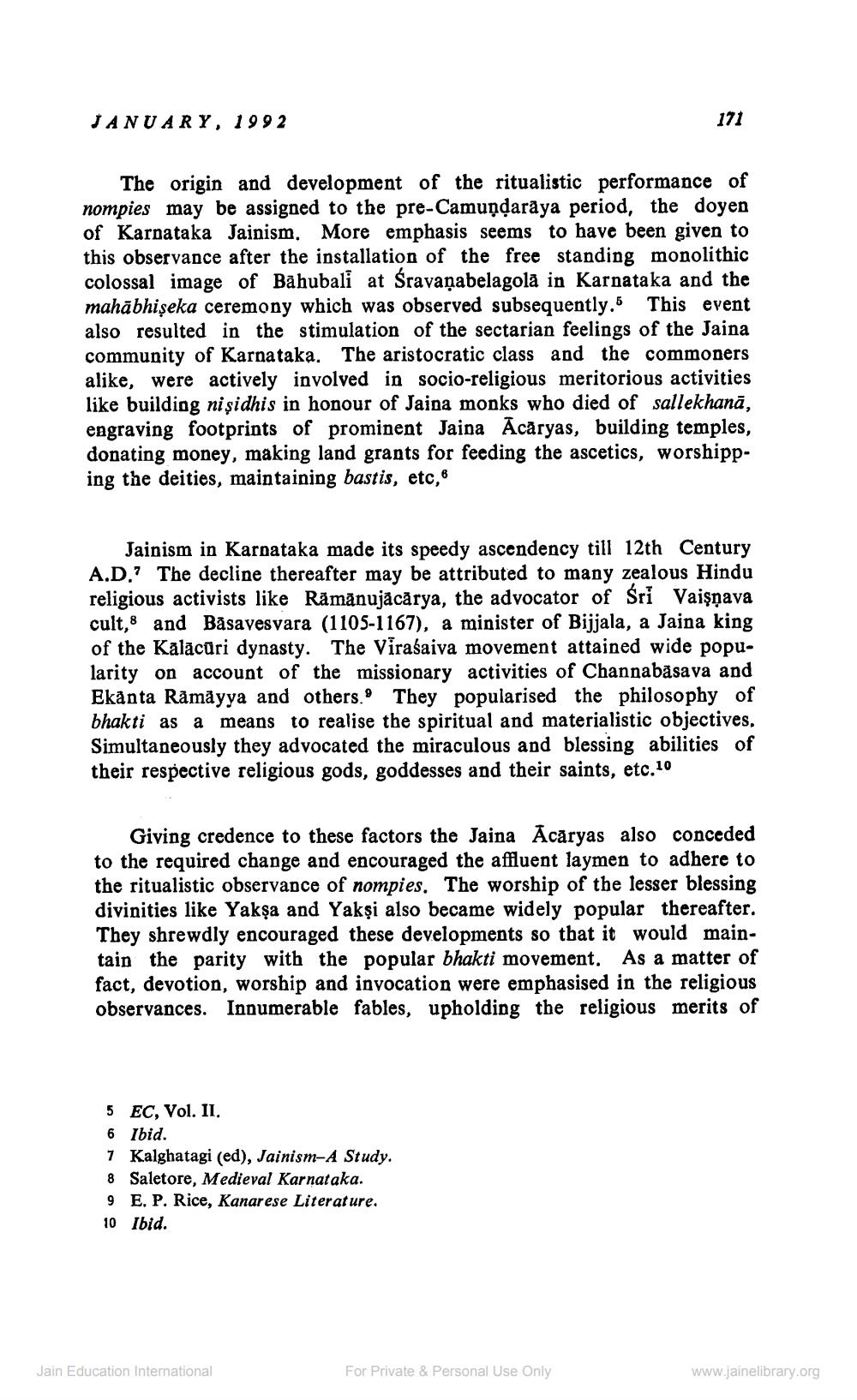________________
JANUARY, 1992
The origin and development of the ritualistic performance of nompies may be assigned to the pre-Camunḍaraya period, the doyen of Karnataka Jainism. More emphasis seems to have been given to this observance after the installation of the free standing monolithic colossal image of Bahubali at Śravanabelagola in Karnataka and the mahābhişeka ceremony which was observed subsequently.5 This event also resulted in the stimulation of the sectarian feelings of the Jaina community of Karnataka. The aristocratic class and the commoners alike, were actively involved in socio-religious meritorious activities like building nişidhis in honour of Jaina monks who died of sallekhanā, engraving footprints of prominent Jaina Acaryas, building temples, donating money, making land grants for feeding the ascetics, worshipping the deities, maintaining bastis, etc,"
Jainism in Karnataka made its speedy ascendency till 12th Century A.D. The decline thereafter may be attributed to many zealous Hindu religious activists like Rāmānujācārya, the advocator of Sri Vaisnava cult, and Basavesvara (1105-1167), a minister of Bijjala, a Jaina king of the Kalacuri dynasty. The Virašaiva movement attained wide popularity on account of the missionary activities of Channabasava and Ekanta Rāmāyya and others. They popularised the philosophy of bhakti as a means to realise the spiritual and materialistic objectives. Simultaneously they advocated the miraculous and blessing abilities of their respective religious gods, goddesses and their saints, etc.10
171
Giving credence to these factors the Jaina Acaryas also conceded to the required change and encouraged the affluent laymen to adhere to the ritualistic observance of nompies. The worship of the lesser blessing divinities like Yakṣa and Yakşi also became widely popular thereafter. They shrewdly encouraged these developments so that it would maintain the parity with the popular bhakti movement. As a matter of fact, devotion, worship and invocation were emphasised in the religious observances. Innumerable fables, upholding the religious merits of
5 EC, Vol. II.
6 Ibid.
7 Kalghatagi (ed), Jainism-A Study.
8 Saletore, Medieval Karnataka.
9 E. P. Rice, Kanarese Literature. 10 Ibid.
Jain Education International
For Private & Personal Use Only
www.jainelibrary.org




